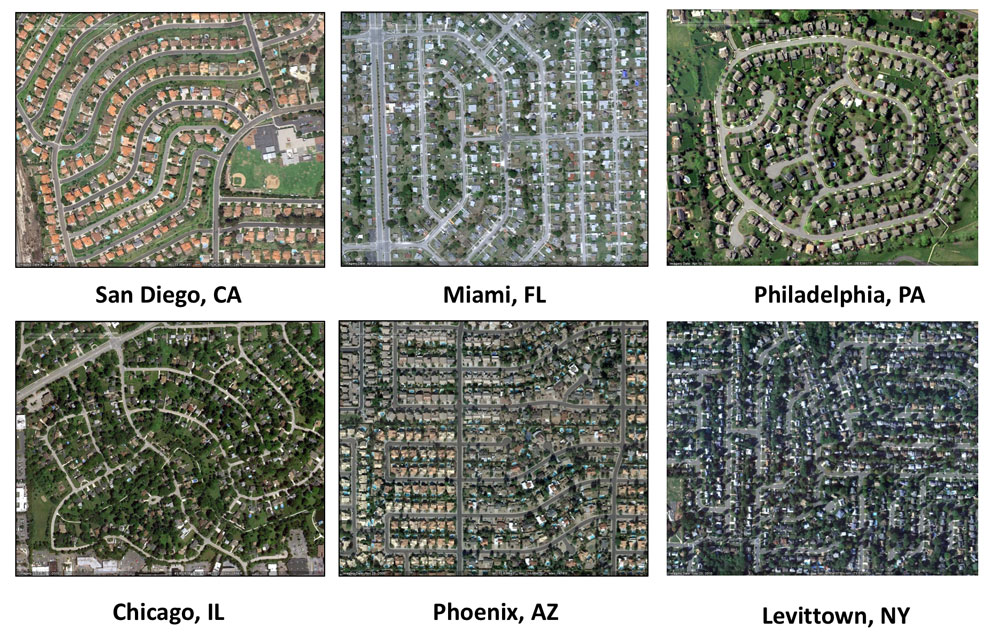Posted on August 25, 2017 in ASRC News, Environmental Sciences Initiative

Expansion of urban, suburban and exurban land in the United States over the past several decades has led to neighborhoods in very different parts of the country featuring patterns of roads, residential lots, commercial areas and aquatic features that are more similar to each other than the native ecosystems they replaced.
In research funded by the National Science Foundation (NSF)’s Macrosystems Biology program, a team led by a City University of New York (CUNY) scientist has explored the effects of such urban homogenization on plant biodiversity, soil and nutrient processing, microclimate and hydrography at the continental scale. Results from this work, conducted in residential areas of six cities across the United States, recently appeared in an issue of Nature Ecology & Evolution.
“While urban land use occupies a relatively small area of the Earth’s surface, suburban and exurban land use cover much larger areas,” said lead researcher Peter Groffman, Professor with the Environmental Sciences Initiative at the Advanced Science Research Center (ASRC) at the Graduate Center, CUNY. “Moreover, urbanization has impacts on processes such as plant community assembly and ecosystem function far beyond residential parcels and landscapes that are evident at regional and continental scales.”
Landscape cultivation closely associated with residential planning has led to the homogenization of certain soil processes, as well as plant community composition. Soil parameters — ranging from moisture content to microbial biomass — varied less between residential sites in Boston, Baltimore, Miami, Minneapolis, Phoenix and Los Angeles than among their nearby, natural reference sites. Only carbon sequestration differed among the sites, likely due to the effects of differing climate.
Because residential areas have similar landscaping, flora in urban, suburban and exurban areas have lower turnover in species, resulting in higher species richness — due to the high number of exotic species — but lower diversity than flora in natural areas. These cultivated species may adapt to become part of the natural flora, but such assemblages have serious implications for local bird and insect communities, since these animals have strong associations with local, native plants.
By focusing on human actions at multiple spatial and temporal scales — parcel, neighborhood and regional, among others — researchers showed the diversity, composition and structure of the residential macrosystem will see dramatic changes in the next 50 to 100 years at a potentially continental scale, as a result of its ever-growing expansion into both agricultural and undeveloped areas.
The observations captured in this paper serve as a basis for new research just now underway and led by Groffman, also Professor of Earth and Environmental Sciences at Brooklyn College. This work, which also was funded by NSF’s Macrosystems Biology program, will address the factors that contribute to stability and change in what is termed the ‘American residential macrosystem’. It will determine how and if changing desires and needs to water use efficiency, wildlife and runoff control will lead to significant changes in the structure and function of these ecosystems across the U.S. at different spatial scales (parcel, landscape, region, continent). A key part of this new work is the design and testing of different scenarios for what the future American residential macrosystem may look like, and their ecological implications.
Click here to read the full paper .
